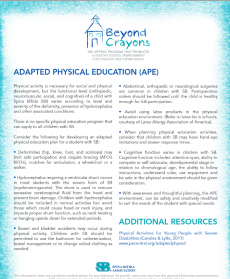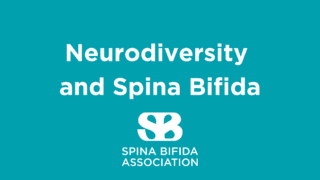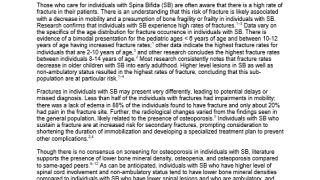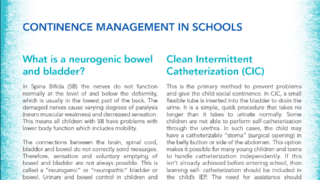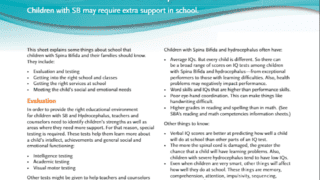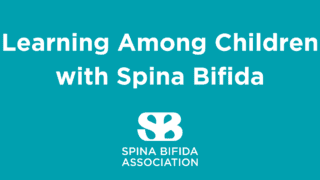Physical activity is necessary for social and physical development. With awareness and thoughtful planning, the environment can be safely and creatively modified to suit the needs of the student with special needs.
Consider the following for developing an adapted physical education plan for a student with SB:
Orthopedics
Hip, knee, foot, and scoliosis may require a program adaptation. Braces may be needed, crutches, wheelchairs or other devices to ensure safe participation.
Neurological
Children with hydrocephalus should be included in normal activities but avoid those which could cause head or neck injury, and impede proper shunt function, such as neck twisting or hanging upside down for extended periods.
Bowel and Bladder
To avoid accidents during physical activity. Children with SB should be permitted to use the bathroom for catheterization, bowel management or to change soiled clothing as needed.
Latex
Avoid using latex products in the physical education environment.
This information does not constitute medical advice for any individual. As special cases may vary from the general information presented here, SBA advises readers to consult a qualified medical or other professional on an individual basis.
Resources
I’m interested in resources related to:
Tags
